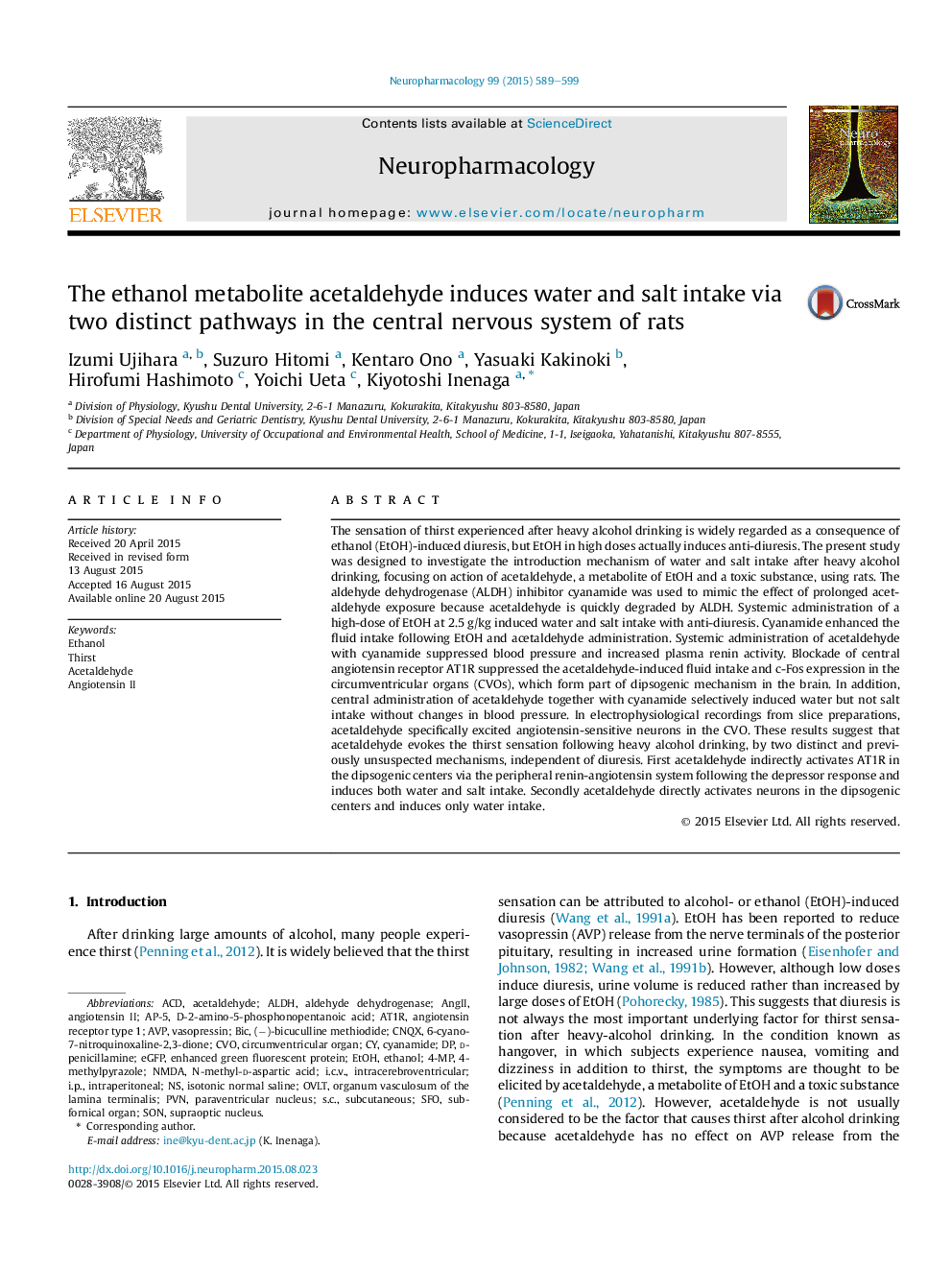| کد مقاله | کد نشریه | سال انتشار | مقاله انگلیسی | نسخه تمام متن |
|---|---|---|---|---|
| 5813846 | 1556616 | 2015 | 11 صفحه PDF | دانلود رایگان |
- We investigated induction mechanism of thirst sensation after heavy-alcohol drinking, focusing on action of acetaldehyde by using rats.
- Acetaldehyde evoked thirst sensation by activating dipsogenic centers in the brain via two distinct mechanisms.
- First acetaldehyde indirectly activates AT1R in the dipsogenic centers via the renin-angiotensin system following the depressor response.
- Secondly acetaldehyde directly activates neurons in the dipsogenic centers.
The sensation of thirst experienced after heavy alcohol drinking is widely regarded as a consequence of ethanol (EtOH)-induced diuresis, but EtOH in high doses actually induces anti-diuresis. The present study was designed to investigate the introduction mechanism of water and salt intake after heavy alcohol drinking, focusing on action of acetaldehyde, a metabolite of EtOH and a toxic substance, using rats. The aldehyde dehydrogenase (ALDH) inhibitor cyanamide was used to mimic the effect of prolonged acetaldehyde exposure because acetaldehyde is quickly degraded by ALDH. Systemic administration of a high-dose of EtOH at 2.5Â g/kg induced water and salt intake with anti-diuresis. Cyanamide enhanced the fluid intake following EtOH and acetaldehyde administration. Systemic administration of acetaldehyde with cyanamide suppressed blood pressure and increased plasma renin activity. Blockade of central angiotensin receptor AT1R suppressed the acetaldehyde-induced fluid intake and c-Fos expression in the circumventricular organs (CVOs), which form part of dipsogenic mechanism in the brain. In addition, central administration of acetaldehyde together with cyanamide selectively induced water but not salt intake without changes in blood pressure. In electrophysiological recordings from slice preparations, acetaldehyde specifically excited angiotensin-sensitive neurons in the CVO. These results suggest that acetaldehyde evokes the thirst sensation following heavy alcohol drinking, by two distinct and previously unsuspected mechanisms, independent of diuresis. First acetaldehyde indirectly activates AT1R in the dipsogenic centers via the peripheral renin-angiotensin system following the depressor response and induces both water and salt intake. Secondly acetaldehyde directly activates neurons in the dipsogenic centers and induces only water intake.
Journal: Neuropharmacology - Volume 99, December 2015, Pages 589-599
